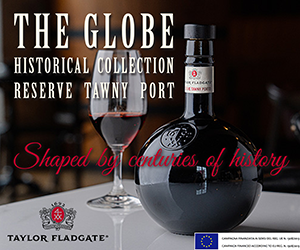Piero Antinori, the man who made the term "super Tuscan" global, was one of the stars of last month's 30th Playhouse wine fest.

The soft-spoken, clear-thinking Tuscan wowed an audience of nearly 200 consumers with a wide range of wine that took tasters from his beloved Chianti Classico region in Tuscany to Atlas Peak in California, Puente Alto in Chile and back to Bolgheri on Tuscany's west coast.
Although Antinori claims he doesn't know who coined the term "super Tuscan," used since the early 1970s to describe high-end Tuscan reds that do not conform to the local wine laws, there's little doubt his Tignanello (an 80/20 blend of sangiovese and Cabernet Sauvignon) is the wine that made the term famous.
Solaia is another Antinori super Tuscan story. Now more than 25 years old, it is the mirror image of Tignanello, mixing 80 per cent Cabernet Sauvignon with 20 per cent sangiovese.
On this night we learn that "the Marchese," as he is widely referred to by his employees, believes firmly in the notion of terroir. "We give more importance to the terroir character than normally is done in the New World. It's the mix of viticulture, the soil, the climate, the grape varieties but also the human influence that maybe, for centuries, has guided, in a way, the style of wine from generation to generation to generation," says Antinori.
Modest to a fault, Antinori begs off any monikers that he has global influence, instead suggesting new company projects at Tormaresca Puglia, Col Solare in Washington state and Haras de Pirque in Chile are more of an adventure.
Despite his commitment to estate-owned vineyards across Italy and around the world, Antinori is always mindful of his reputation and name when it appears on a bottle of wine.
"We know there is a danger of inflation of the name and we think that more and more, we need to protect the name." In a classic case of less is more, the Marchese says: "In certain estates, to guarantee their individuality we don't even use the name Antinori, but rather we prefer to focus on the name of the estate or property."
In the case of the larger-production Santa Cristina, Antinori will develop the brand Santa Cristina, and leave Antinori for Tuscany and the key estates in Montepulciano and Brunello.
Outside of Tuscany proper, Tormaresca, Haras de Pirque, Antica and Col Solare will not use the Antinori name on the front label.
Today we look at several Antinori-owned wines tasted or re-tasted at the festival. Some are in B.C. Liquor Stores, others in private wine shops in Vancouver (in this case your best bet is the Mark Anthony Wine Mart at 25th and Oak), while still others can be found on major restaurant lists throughout the province. Enjoy.
New from Antinori is Santa Cristina Antinori Pinot Grigio 2006. Look for fresh citrus, floral notes that follow through on the palate. Snappy, fresh and affordable, this is grigio that works for the price and screams Italy too. Good value.
The Antinori Peppoli Chianti Classico 2004 is a big improvement on the '03 that suffered from a bit too much heat. Look for a beautiful fragrant, floral nose, black cherry fruit and a dollop of milk chocolate underneath. There is a tiny drop of Syrah in this wine to add a bit of spice in the finish. Very fine.
Antinori Badia a Passignano Chianti Classico Riserva 2003 is always a bit more gamey and peppery than most Chianti. In this case, the meaty, sweet fruit with bits of chocolate, tobacco and cherry jam flavours hits all the right notes in what was an atypical super-warm growing season. It's not a fresh as normal and lacks the real Tuscan purity of fruit you get with sangiovese but if you like the richer "California style," this is it.
After the vineyard reorganization, the vines used for Tormaresca Torcicoda Primitivo 2003 average some 15 years. The nose is slightly feral with peppery, plum fruits and a wisp of almonds. The entry is rich; the tannins are smooth and chalky. On the palate the flavours are a mix of wild game (Salento), ripe blackberry jam with licorice and vanilla. A big blockbuster-style red that spends just over a year in oak barrels. Good value.
Pian delle Vigne Brunello di Montalcino 2001 is a very sophisticated style of sangiovese grown on the hallowed hillside soils of Brunello di Montalcino. The Antinori version mixes savoury gamey fruit flavours with bits of licorice and black jam notes. It is similarly flavoured with earthy, meaty fruit flavours and a touch of orange peel. As always, Brunello is best with time in the bottle and this powerful vintage is no exception.
The flagship Antinori Tignanello 2004 is simply super Tuscan. Big, rich, round and dry with fine-grained tannins, it really delivers in the intensity department. Look for plenty of vanilla, mocha, peppery, black cherry, cassis jam fruit streaked with tobacco and saddle leather. Classic Tignanello that will require four to seven years to fully mature.
Santa Cristina Antinori Pinot Grigio 2006, Italy
Price: $15
UPC: 088586003226
Score: 87/100
Remarks: Affordable grigio that screams Italy too.
Antinori Peppoli Chianti Classico 2004, Italy
Price: $27
UPC: 8087550012000
Score: 89/100
Remarks: Look for a fragrant floral nose, black cherry fruit and a dollop of milk chocolate.
Antinori Badia A Passignano Chianti Classico Riserva 2003, Italy
Price: $55
UPC: 8001935064503
Score: 90/100
Remarks: If you prefer the richer "California style" of sangiovese, this is it.
Tormaresca Torcicoda Primitivo 2003, Italy
Price: $25
UPC: 08026530000176
Score: 89/100
Remarks: Ripe blackberry jam with licorice and vanilla.
Antinori Pian delle Vigne Brunello di Montalcino 2001, Italy
Price: $75
UPC: 8001935000280
Score: 91/100
Remarks: Good finesse and structure but still best in two to five years.
Antinori Tignanello 2004, Italy
Price: $96
UPC: 8001935124504
Score: 92/100
Remarks: Vanilla, mocha, peppery, black cherry and cassis jam flavours.

 quicksearch
quicksearch





